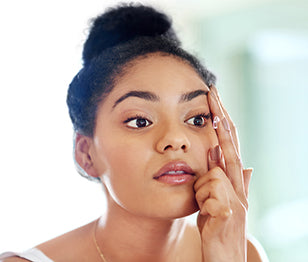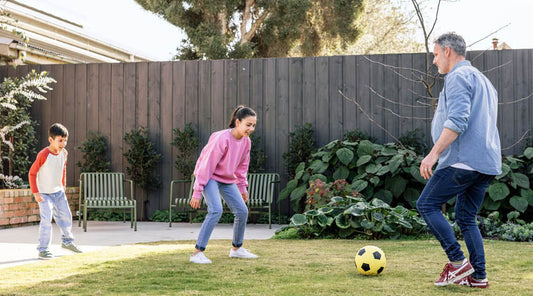Contact lenses 101: your need-to-know guide

Contacts. When you look at them, they just really seem like a little piece of plastic. So we’ve asked the team a few questions on how contact lenses actually work and why they’re such a great choice for many Australians.
First, what are they?
Invented more than 100 years ago, contact lenses are small pieces of a complex type of plastic that help correct vision problems. Contacts float on a film of tears in front of the cornea – a part of the eye that helps us focus.
Are there different types?
Yes. The two main types of contact lenses are called soft lenses and hard lenses. Soft contact lenses are made from light, flexible plastic that conforms to the eye shape, while hard contact lenses are made from firmer plastic that covers only part of the cornea.
Soft contact lenses (which are usually disposable) are by far the most common, says Bupa optometrist Karen Makin. “One of the main types of materials used in soft lenses is what’s called ‘hydrogel’,” she says. “It’s been around for a long time and is still being used to manufacture contact lenses.
“A newer material is ‘silicon hydrogel’, a breathable material that allows more oxygen through to the cornea.”
What are the benefits of contacts?
If you wear glasses there’s a good chance you can also use contact lenses – even those who need multifocal lenses. “Your vision is unobstructed as you don’t have something on your face that may be a barrier, so you get a more natural field of vision,” Makin says. “Physical activities and sport are also much easier in most cases with contact lenses.”
And for those with a higher prescription, contact lenses give a better result than glasses thanks to ‘spectacle magnification’, which means their lenses change the size of what they are seeing.
“Someone with a high long-sighted prescription gets a lot of spectacle magnification, making things look bigger than they actually are,” Makin says.
“Those with a high short-sighted prescription get the opposite – images become much smaller than they actually are. With contact lenses you see things in their natural size, as the lens correction is on the surface of the eye, not sticking out in front.”
What about wearing contacts with vision conditions?
If you’ve got a vision condition like keratoconus, a progressive condition of the cornea, contact lenses can actually give better results than glasses. “With keratoconus, the cornea is in a cone-like shape rather than being spherical,” explains Makin.
“Because of the irregular surface, contact lenses often do give better vision. In the early stages we would suggest soft contact lenses, but if the disease is progressing sometimes rigid or hard contact lenses are needed to give the best visual results.”
How do I care for them?
It’s a bit more work than having glasses because you need to make sure they’re always clean. “If you’re wearing reusable contact lenses, you need to clean and disinfect them after each wear,” says Makin. “You shouldn’t use tap water, bottled water or saliva – use a proper contact lens solution.”
It's also really important to listen to what your optometrist says about how often to replace them. Makin says, “If they’re daily, replace them daily, if they’re monthly, replace them monthly - don’t try to sneak extra time out of them.
Any other quick benefits?
Makeup: “It’s easier to apply makeup with contact lenses because you can see what you’re doing,” says Makin.
Sunglasses: Having contacts means you don’t necessarily have to get prescription sunnies – just buy the ones you like and put them on over the top.
Glasses are a great backup
Of course, it’s always useful to have a good pair of glasses handy.
If say you’re on a long-haul flight or when you’re unwell, you may not be able to do your proper contact lens routine. “Always have a good pair of glasses that you can wear just in case,” says Makin.

We're here to help
Ask your optometrist if you have any questions about contact lenses or book a contact lens fit or refresh appointment today.
You might also like to read...
View all-
A little about Orthokeratology
Are you looking for a solution that doesn’t involve invasive procedures or surgery? Orthokeratology may be your answer…
Contact lenses guideA little about Orthokeratology
Are you looking for a solution that doesn’t involve invasive procedures or surgery? Orthokeratology may be your answer…
Read more -
Contact lenses 101: your need-to-know guide
How do teeny-tiny bits of plastic help you see better? Here’s an explainer on how contact lenses work.
Contact lenses guideContact lenses 101: your need-to-know guide
How do teeny-tiny bits of plastic help you see better? Here’s an explainer on how contact lenses work.
Read more -
Are contact lenses right for you?
Contact lenses are popular for a reason – they make life much easier for many people with vision issues. However, they might not be the right option for everyone.
Contact lenses guideAre contact lenses right for you?
Contact lenses are popular for a reason – they make life much easier for many people with vision issues. However, they might not be the right option for everyone.
Read more





